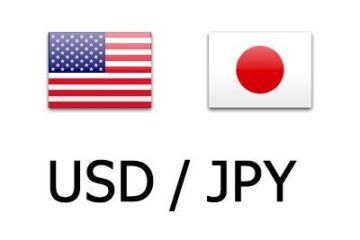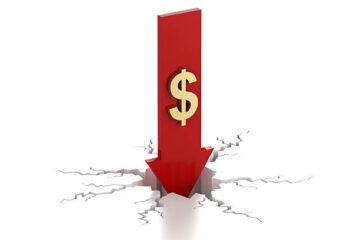In a multi-story glass tower, cars are stacked, ready for pickup.
Customers get a hefty coin, pop it in, and watch as their new car is smoothly retrieved and delivered right to them.
This is Carvana’s used-car vending machine, first launched in Nashville in 2015. It’s one way Carvana wants to reimagine the car-buying experience and differentiate itself from traditional dealerships.
Carvana also offered another unique car-buying service: delivery. Buyers could purchase cars online and Carvana would drive them to their door rather than making them travel and sit for hours negotiating in Carvana’s locations.
The hands-off approach helped Carvana shares soar above $370 in 2021 as pandemic-era lockdowns caused new car shortages and fueled demand for used vehicles, pushing the price gap between new and used cars to record highs.
Related: Carvana’s largest rival exits the online used car business
But then, Carvana struggled in 2022 and 2023, grappling with mounting financial and operational pressures and less demand for its costly delivery services as Covid-era lockdowns ended.
In December 2022, the share price fell below $4, partly because rising interest rates designed to slow inflation dampened sales (Carvana’s stock price was down 99% from its peak). As a result, the company was forced to restructure its debt. The challenges led many to forecast that Carvana was on borrowed time and that bankruptcy was in the future.
Carvana stock is up more than 330% year-to-date as of Nov. 1.
Carvana’s Q3 financial results put it on stronger financial footing
Fortunately for Carvana, its fortunes began to turn in 2024 after a series of efforts, including streamlining costs and convincing creditors to accept a $1.3 billion reduction in debt value in 2023. Overall, Carvana cut its workforce by over 4,000 people, reducing annual expenses by $1.1 billion.
Its latest earnings release shows that the company is hitting new records after those tough decisions.
Carvana surged nearly 20% on Oct. 31 after the used-car retailer posted a Q3 earnings beat and raised its 2024 earnings forecast.
In the third quarter, Carvana reported earnings per share of 64 cents, more than double the consensus estimate of 25 cents. Revenue came in at $3.65 billion, surpassing the anticipated $3.45 billion.
Related: Analysts shift gears on Carvana stock price targets on growth prospects
The company now anticipates that its adjusted earnings before interest, taxes, depreciation, and amortization (EBITDA) will surpass the upper limit of its earlier forecasted range of $1 billion to $1.2 billion for the full year 2024, according to a statement.
“We had record performance in virtually every key financial measure,” Carvana founder and CEO Ernie Garcia said in a shareholder letter, “Today, we are the most profitable and fastest-growing automotive retailer and there is still much more to do.”
“Q3 experienced strong customer demand similar to that of Q1 and Q2,” Garcia said. The company also expects higher retail vehicle sales in the fourth quarter compared with the third, during which it sold 108,651 vehicles, up 34% year-over-year.
Carvana stock is up more than 330% year-to-date as of Nov. 1.
Analysts boost Carvana stock price target after earnings
At least five analysts raised Carvana’s stock price target following the earnings report.
Piper Sandler increased its price target for Carvana shares from $151 to $225 with a neutral rating, thefly.com reported.
The firm acknowledges a strong upside for Carvana, which is indicated to be up by around 20% after Q3 earnings significantly exceeded both Piper’s and market expectations.
“Indisputably, we moved to neutral prematurely,” Piper says. However, the firm now believes that Carvana’s valuation suggests the company is on track to reach its maximum reconditioning capacity of 3 million units per year and could potentially exceed the high end of its EBITDA margin guidance.
JPMorgan lifted its price target on Carvana from $230 to $300, keeping an overweight rating. The firm has increased its EBITDA estimates, saying Carvana remains its top pick in the auto retail ecosystem.
“3Q24 results should be seen as a clearing event that is likely to diminish any lingering concerns/skepticism around CVNA’s recent progress on unit economics with focus shifting to the unique benefits of the operating model and widening moat vs peers, reinforced by the recent foray into commercial – retail marketplace that unlocks a significant profit opportunity with infrastructure and resources to scale,” JPMorgan said, according to Business Insider.
JMP Securities has raised its price target for Carvana from $200 to $320, maintaining an outperform rating. The firm believes investors may underestimate Carvana’s capacity to achieve substantial unit growth alongside solid margins.
More Wall Street Analysts:
Analysts update Meta stock price target with Q3 earnings in focusAnalysts update outlook for Nvidia’s Blackwell chips amid AI boomAnalyst reboots Reddit stock price target ahead of earnings
Baird analyst Craig Kennison raised Carvana’s price target from $160 to $240 with a neutral rating, citing exceptional Q3 results.
Looking ahead, Baird anticipates the momentum to continue, expecting the pace to accelerate in Q4.
Carvana closed at $229 on Nov. 1 and very few are talking about its bankruptcy risk anymore.
Related: Veteran fund manager sees world of pain coming for stocks


